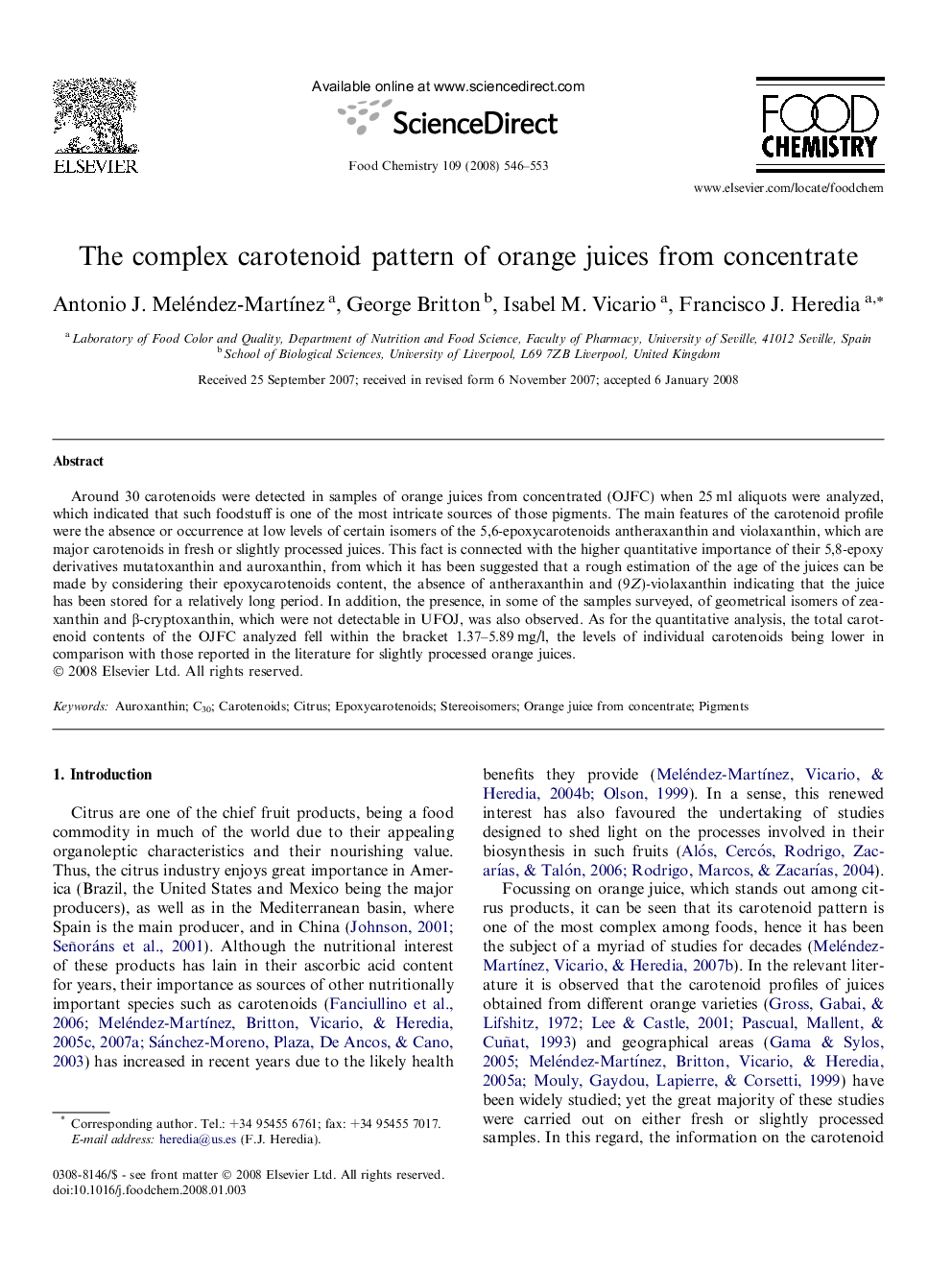| Article ID | Journal | Published Year | Pages | File Type |
|---|---|---|---|---|
| 1187066 | Food Chemistry | 2008 | 8 Pages |
Around 30 carotenoids were detected in samples of orange juices from concentrated (OJFC) when 25 ml aliquots were analyzed, which indicated that such foodstuff is one of the most intricate sources of those pigments. The main features of the carotenoid profile were the absence or occurrence at low levels of certain isomers of the 5,6-epoxycarotenoids antheraxanthin and violaxanthin, which are major carotenoids in fresh or slightly processed juices. This fact is connected with the higher quantitative importance of their 5,8-epoxy derivatives mutatoxanthin and auroxanthin, from which it has been suggested that a rough estimation of the age of the juices can be made by considering their epoxycarotenoids content, the absence of antheraxanthin and (9Z)-violaxanthin indicating that the juice has been stored for a relatively long period. In addition, the presence, in some of the samples surveyed, of geometrical isomers of zeaxanthin and β-cryptoxanthin, which were not detectable in UFOJ, was also observed. As for the quantitative analysis, the total carotenoid contents of the OJFC analyzed fell within the bracket 1.37–5.89 mg/l, the levels of individual carotenoids being lower in comparison with those reported in the literature for slightly processed orange juices.
